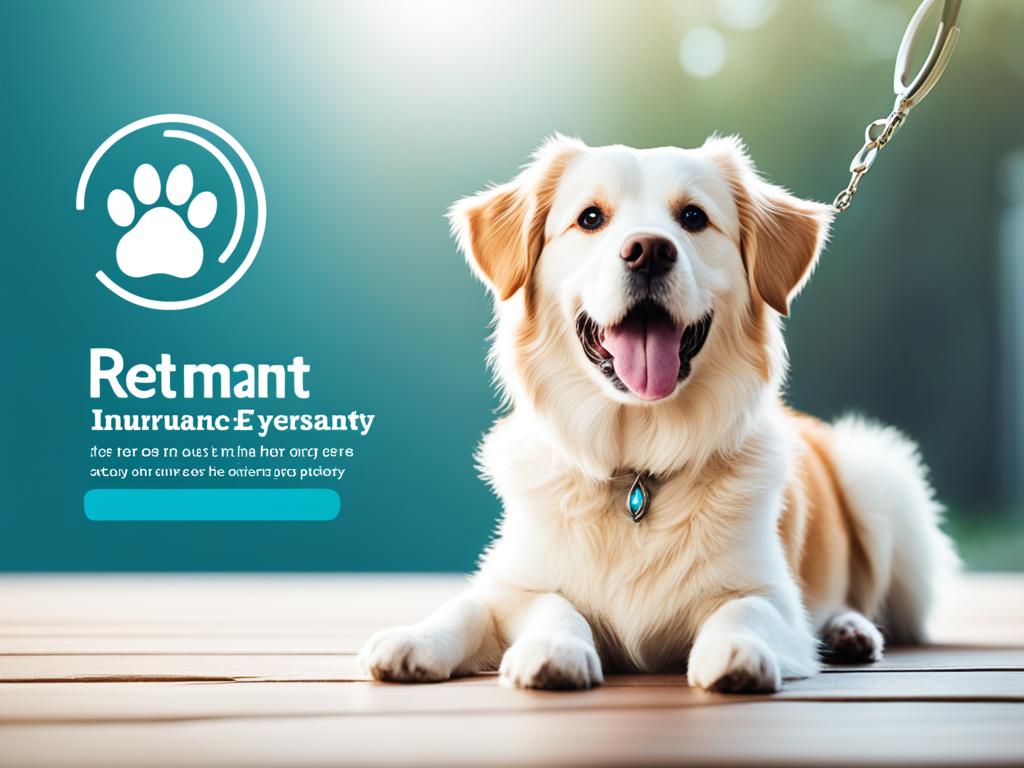The landscape of pet ownership is changing quickly. Now, more people see the value in full pet insurance. As shown by the 2022-2024 National Pet Owners Survey by the American Pet Product Association (APPA), 66% of U.S. households, about 89 million, have a pet.1 This number includes 65.1 million who own dogs and 46.5 million with cats. The survey also found more people are getting pet insurance. For dogs, the number went from 15% in 2018 to 22% in 2022. For cats, it doubled from 8% to 16% in the same period.1 Depending on the level chosen, annual pet insurance can cost from $250 to $499.1
This article explores all aspects of pet insurance, from what is covered to how much you can get back. It looks at things like deductibles and if your pet’s past health issues are covered. We aim to help pet owners make informed choices to keep their pets happy and healthy. By understanding pet insurance better, readers will learn how to make sure their pets get the care they need.
Key Takeaways
- The increase in pet ownership during the pandemic made pet insurance more popular.
- Comprehensive pet insurance can cover many different expenses, from regular check-ups to accidents.
- Things like your pet’s age, breed, and health history can affect how much insurance costs and what it covers.
- Knowing about policy exceptions, deductibles, and repayment rates is key to choosing the best pet insurance.
- Looking at other options, like savings accounts for pets or services from vet schools, might be a budget-friendly choice.
Rising Trend in Pet Insurance
The COVID-19 pandemic changed a lot for pet owners. People found comfort in pets during lockdowns. This led to more U.S. households owning pets, jumping from 67% in 2018 to 70% in 2022.2 Now, with the “Great Resignation” and more people staying in their jobs, employers offer pet insurance to keep workers happy.2 Currently, 5.36 million pets in North America have insurance. California is a frontrunner, covering 18.6% of these pets.3
Pandemic’s Impact on Pet Ownership
A recent survey shows more dog and cat owners have pet health insurance since 2018. For dogs, that number jumped from 15% to 22%, and for cats, it doubled from 8% to 16%.2 California takes the lead with the most pets insured at 18.6%. New York follows with 7% market share.3
Statistics on Pet Insurance Adoption
Since the pandemic, pet insurance has become a sought-after work benefit. Employers are offering it to keep employees happy. Currently, only 15% of companies provide pet insurance.4 But, this number is likely to grow. New policies aim to meet the needs of employees who see their pets as part of their family.4
Employer-Provided Pet Insurance Benefits
The pandemic made people value pets more for companionship. Home pet ownership went up, bringing the U.S. from 67% to 70%.2 This, combined with the “Great Resignation,” has pushed more employers to offer pet insurance. It’s now a strategy to keep good workers.2
Understanding Pet Insurance
There are two main types of pet insurance: accident-only and accident and illness. Accident-only plans help when pets get hurt, for example, from getting hit by a car or eating something they shouldn’t.5 The other type, accident and illness, covers both injuries and illnesses. This includes things like allergies, infections, and cancer.6 You can also find plans that include wellness, taking care of things like shots and check-ups, for more money each month.
Accident-Only Coverage
Accident-only plans help with sudden injuries and emergencies, like breaking a bone or being hit by a car.5 They pay for things like tests, treatments, and even surgery if needed.6 These plans cost less than those that cover illnesses too. They are a smart choice for those who worry about paying big vet bills after accidents.
Accident and Illness Coverage
Accident and illness plans are more detailed. They look after both injuries and a wide variety of health problems, such as allergies and serious diseases, like cancer.5 While these plans need more money each month, they provide better help with vet costs for serious illnesses.6 Some of these plans also have a wellness part, which helps pay for regular pet care.
Pet Insurance Considerations
When looking for pet insurance, there’s a lot to think about. You should check what each plan covers, the cost every month, and any fees you might pay first. Also, how much the insurance will pay back, the limits they have, and when they won’t pay are important.7 Figure out what your pet needs health-wise before you compare different insurance plans. This helps you see which one fits your budget and your pet’s needs best.8 It’s also key to know the policy. Make sure you can pick your vet, see if it covers check-ups, and if they pay for special treatments like physical therapy.7
| Consideration | Description | Impact |
|---|---|---|
| Pre-Existing Conditions | 9Percentage of insurance providers that have exclusions for preexisting conditions: Not paying for treatment for any condition previously advised or treated before enrolling in a new pet insurance policy. | Limits coverage for pets with existing medical issues, requiring pet owners to carefully review policy details. |
| Waiting Periods | 9Percentage of pet insurance policies with waiting or affiliation periods: Specified time that must elapse before coverage begins, not covering treatment costs during this waiting period. | Delays the start of coverage, potentially leaving pet owners responsible for initial veterinary expenses. |
| Hereditary/Congenital Conditions | 9Percentage of coverage that excludes costs for hereditary disorders: Not paying for treatment of conditions genetically transmitted from parents.9Percentage of coverage that excludes costs for congenital anomalies or disorders: Not covering treatment for conditions present at birth, whether inherited or caused by the environment. | Excludes coverage for common breed-specific issues, emphasizing the need for tailored policies.7 |
| Deductibles and Co-Pays | 9Percentage of policies with deductibles or coinsurance clauses: Reimbursement reduced by a set amount or percentage. | Affects the overall out-of-pocket costs for pet owners, requiring careful consideration of deductible and reimbursement levels. |
| Coverage Limits | 9Percentage of pet insurance policies with annual or lifetime limits: Capping the amount paid for veterinary services. | Restricts the total coverage available, potentially leaving pet owners responsible for expenses exceeding the policy limits. |
| Premium Increases | 9Likelihood of renewal premium increase after making a claim: Potential increase in the amount of the renewal premium. | Affects the long-term affordability of the policy, necessitating an understanding of the provider’s pricing structure. |
| Reimbursement Basis | 9Basis for reimbursement for veterinary services: Variability in payment formulas, not necessarily matching the billed amount.9Industry standards for reimbursement structures: Some policies based on standardized schedules or industry-specific charges for services provided. | Impacts the actual amount pet owners receive in reimbursement, requiring careful review of the provider’s payment methodology. |
Thinking about these points can help you find the right pet insurance. Look at your pet’s needs, including their age, where you live, and what their breed may need. A tool like Pawlicy Advisor can be very helpful in this process.7

Cost of Pet Insurance
The price of pet insurance varies a lot. It depends on the pet’s age, breed, where you live, and the type of plan. The deductible and reimbursement rate also affect the cost. Young pets often get cheaper rates, but older ones might pay more. Pets with certain hereditary health risks might have higher premiums too.10 Plans with lower monthly costs usually have higher deductibles and lower reimbursement rates. They offer less financial help when you make a claim, though.
Factors Affecting Premium Costs
The average monthly pet insurance cost is about $60 for dogs and $32 for cats, as found by MarketWatch. Yet, prices change a lot based on where you live and your pet’s details. For example, Lemonade’s average dog policy costs $52 a month, and their cat policy is $29 a month.10 Trupanion, known for unlimited coverage, charges more. Their dog policies are about $131 a month, and cat policies are about $51 a month.10
Average Costs by Pet Type
| Pet Type | Average Monthly Cost | Average Annual Cost |
|---|---|---|
| Dogs | 11$48 | 11$576 |
| Cats | 11$28 | 11$336 |
This table breaks down the cost of insurance. It shows that on average, dog insurance is about $48 a month. Cat insurance is about $28 a month. Annually, that’s around $576 for dogs and $336 for cats. These averages come from a policy with $5,000 coverage each year, a $250 deductible, and an 80% reimbursement.
If the policy gives unlimited yearly coverage, with a $250 deductible and 80% reimbursement, it costs more. For dogs, it’s about $816 a year, and for cats, it’s $480. The pet insurance cost varies by breed. For dogs, prices range from $31 to $124 monthly. Cat insurance ranges from $22 to $42 monthly. This all assumes a $5,000 annual coverage, $250 deductible, and 80% back in reimbursements.11
Choosing the Right Pet Insurance
Choosing pet insurance is vital. You need to look at what your pet might need. This includes age, breed, and any health conditions already there.7 If your pet is older or of a certain breed known for more health issues, they will need comprehensive coverage. This might be for both accidents and illnesses. But, younger, healthier pets might do well with just accident coverage for now. Knowing this about your pet will guide you to the right plan.
Assessing Your Pet’s Health Needs
After understanding your pet’s health needs, compare plans from various insurance companies. You should check the monthly cost, what you pay out of pocket (deductible), how much you get back (reimbursement), and coverage limits.7 It’s also good to find plans that let you adjust these details to suit your needs and budget. Providers like Spot have many options for deductible, reimbursement rates, and coverage limits. This helps you balance cost and protection perfectly.
Comparing Plan Options
Understanding what’s not covered and any waiting periods is key when looking at policies.8 Exclusions usually cover things like pre-existing conditions, some health issues certain breeds are known for, and regular care.8 Waiting periods are the days you have to wait after getting a plan before it starts working. Knowing these details helps prevent any surprises when you need to use your insurance.
Understanding Exclusions and Waiting Periods

Top Pet Insurance Providers
Lemonade
Lemonade is a top choice for pet insurance. They cover accidents, illnesses, and offer wellness plans. For dogs, the monthly rate is about $52, and for cats, it’s about $29. What makes Lemonade special is its speedy process for claims and how affordable it is. They cover many conditions, including chronic ones. They start covering accidents after only 2 days.12
ASPCA Pet Health Insurance
ASPCA Pet Health Insurance offers great plans for pets. They cover accidents, illnesses, and have wellness plans. Their prices are around $50 for dogs and $22 for cats each month. ASPCA is outstanding for its coverage of specialty care and hereditary conditions. They start their accident and illness coverage after 14 days.13
Pets Best
Pets Best also ranks high for pet insurance. They have plans for accidents, illnesses, and wellness. Monthly, it’s about $41 for dogs and $23 for cats. Pet owners love their vey direct pay feature. This service means Pets Best pays the vet directly, so you don’t have to worry about filing claims. They cover accidents after 3 days.13
Alternative Options to Pet Insurance
Some pet owners choose to set up a special account instead of buying pet insurance. They save money regularly in this account for their pet’s vet bills. This choice is flexible but needs careful planning to make sure there’s enough money for emergencies.14
Veterinary Colleges
Getting pet care at a vet college or teaching hospital can be cheaper. These places offer top-notch care at lower prices due to their training missions. This option may not be as easy to access as a local vet but can save you money on complex treatments.
Care Credit
Care Credit is like a credit card for medical needs, including pet health care. It lets you spread out your pet’s vet bills over time, without interest if you pay them off quickly. While it’s a good way to handle surprise vet costs, it’s not the same as having pet insurance.15

Tips for Maximizing Pet Insurance Benefits
For a smooth claims process, pet owners need to know how their insurance works. This means learning how to make claims, whether online or with an app. They should also understand what proof they need from the vet and the deadline for submitting claims. Doing this right can cut down your costs a lot.7
Filing Claims Efficiently
Some insurance companies offer wellness plans for basic care like shots and checkups. Even though you pay extra every month for these, they can make it easier to plan and afford your pet’s healthcare. Plus, using these plans might save you from bigger bills by keeping your pet healthy.7
Utilizing Wellness Plans
If you have more than one pet, ask about discounts for insuring them together. You could save anywhere from 5% to 15% on your insurance. This is great for families with multiple pets. Always check for these discounts when you’re looking at different insurers and policies.7
Multi-Pet Discounts
Conclusion
Pet insurance is key to protecting pet owners financially. It helps with unexpected accidents, illnesses, and chronic conditions. For dog insurance in Ontario, it costs about $55 a month. For cats, it’s around $30 a month.16 By knowing different insurance plans and what matches their needs, pet lovers can choose wisely. This ensures their pets are well looked after.
Not every pet owner might want pet insurance. But, it is a big help against expensive vet bills.17 The monthly costs range from $20 to $50. Yet, it might not save you money based on your pet’s age or health.17 Still, pet insurance stops your pet from lacking treatment because of cost.
More people are getting pets, and more jobs now offer pet insurance. This means more folks want effective and affordable pet health coverage. By picking the best policy, pet owners can give their pets the care they need. This also means their owners don’t have to worry about the cost too much.
FAQ
What are the main types of pet insurance plans?
What factors should I consider when choosing a pet insurance plan?
How much does pet insurance typically cost?
What are some alternative options to pet insurance?
How can I maximize the benefits of my pet insurance policy?
Source Links
- https://boostinsurance.com/blog/pet-insurance-101-what-you-need-to-know/
- https://content.naic.org/cipr-topics/pet-insurance
- https://www.veterinarypracticenews.com/pet-insurance-trends-developments/
- https://media.market.us/pet-insurance-market-news/
- https://www.pawlicy.com/blog/what-is-pet-insurance/
- https://www.nerdwallet.com/article/insurance/pet-insurance-coverage
- https://www.aaha.org/resources/pet-insurance/how-do-i-choose-the-right-pet-insurance/
- https://www.aspcapetinsurance.com/resources/pet-insurance-buyers-guide/
- https://www.insurance.ca.gov/01-consumers/105-type/8-pet/pet-qa.cfm
- https://www.usnews.com/insurance/pet-insurance/how-much-does-pet-insurance-cost
- https://www.forbes.com/advisor/pet-insurance/pet-insurance-cost/
- https://www.usnews.com/insurance/pet-insurance
- https://www.nerdwallet.com/article/insurance/best-pet-insurance-companies
- https://www.marketwatch.com/guides/pet-insurance/best-pet-insurance-companies/
- https://www.pawlicy.com/blog/pet-insurance-alternatives/
- https://pawscanada.ca/blog/understanding-pet-insurance-practical-suggestions/
- https://www.pethonesty.com/blogs/blog/is-pet-insurance-worth-it

